Bitter cold and beauty on the drive to Skagway
On Thursday, I drove down to Skagway again, to pick up another aurora-shooting lens for my camera (more about that below). The weather forecast wasn’t great, but it was supposed to get much worse in the next few days. When I left home at about 10:00 (sunrise was at 09:04), it was -24°C (-11°F).
Before getting into that story, I need to explain the problem that many are having, getting to the blog’s home page. That page died last Saturday, and despite many hours put into it, I haven’t found a solution yet. Luckily, all 1,043 posts in the blog are functioning okay. As soon as I load this post, I’ll be back trying to find an answer to the problem. Thanks to those of you who have sent me a message about it.
After a quick stop at the post office in Skagway, I went over to the Railroad Dock. I was surprised to find that a bunch of timbers have been chained to the dock railing to protect it from falling rock. Apparently there’s more to the story that engineers have said that no more rock is coming down, but those timbers won’t provide protection from anything more than small rocks.

I didn’t stay long at the exposed dock area. Although it was only -7°C (+19°F), a 17mph north wind dropped the wind chill far lower. I have many more grave markers to photograph at the Gold Rush Cemetery, and it’s protected from the wind, so that was my next stop. I spent about half an hour shooting and got another 30 or so of the markers done.
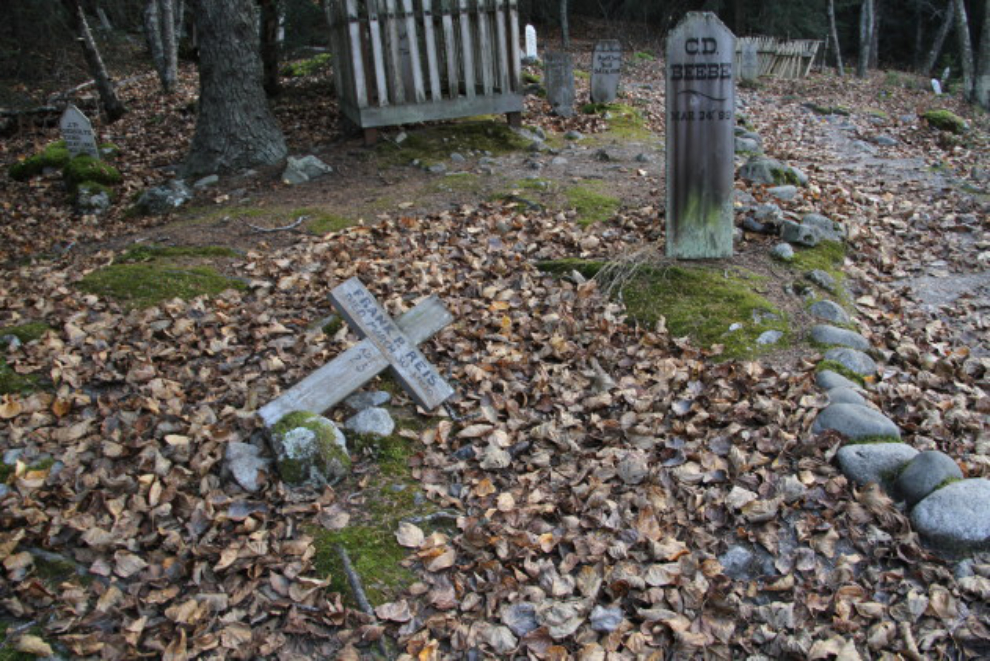
On the way back to the highway, I noticed a rail car in the White Pass yard that I hadn’t seen before. It’s a new build, and was clearly for freight of some sort, but I didn’t know whether it was MoW equipment (Maintenance-of-Way, for track crews), or for hikers or other baggage. A post on the Narrow Gauge Railroad Discussion Forum at Facebook when I got home quickly provided the answer that it’s the baggage car on the Carcross train, used for Chilkoot Trail hikers’ gear, bikes, canoes, etc., and has coolers for the box lunches served on that run, and a generator.
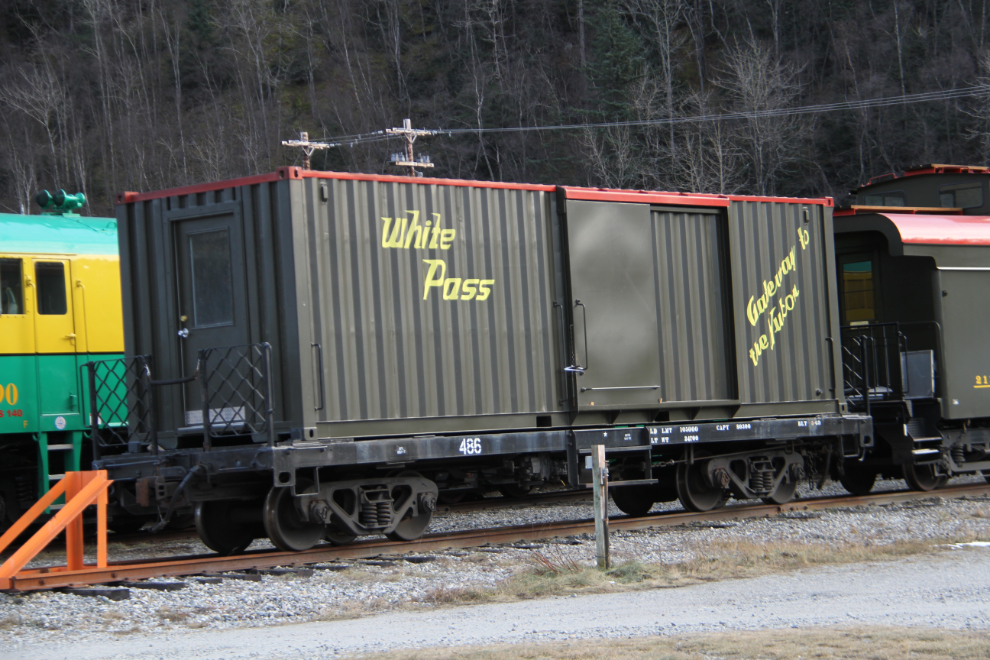
I love frozen waterfalls, and had seen some beauties on the way down from the White Pass, so I knew that it would be a slow drive back up the hill. In many places, water seeps out of what looks like solid granite, but it actually has tiny fractures.
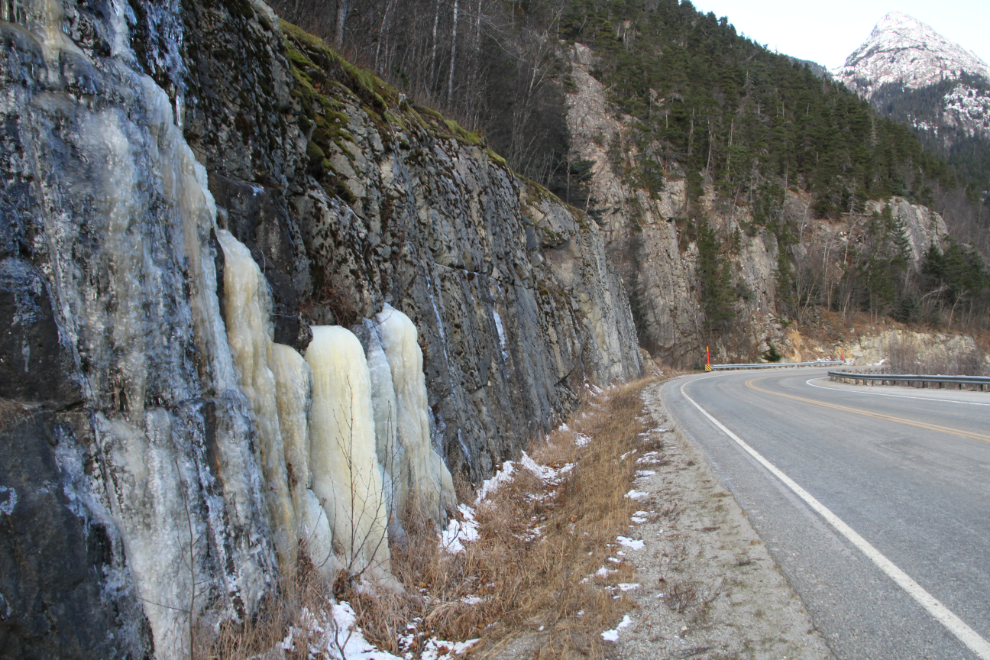
Like snowflakes, each of these ice creations is unique. Some are very complex.
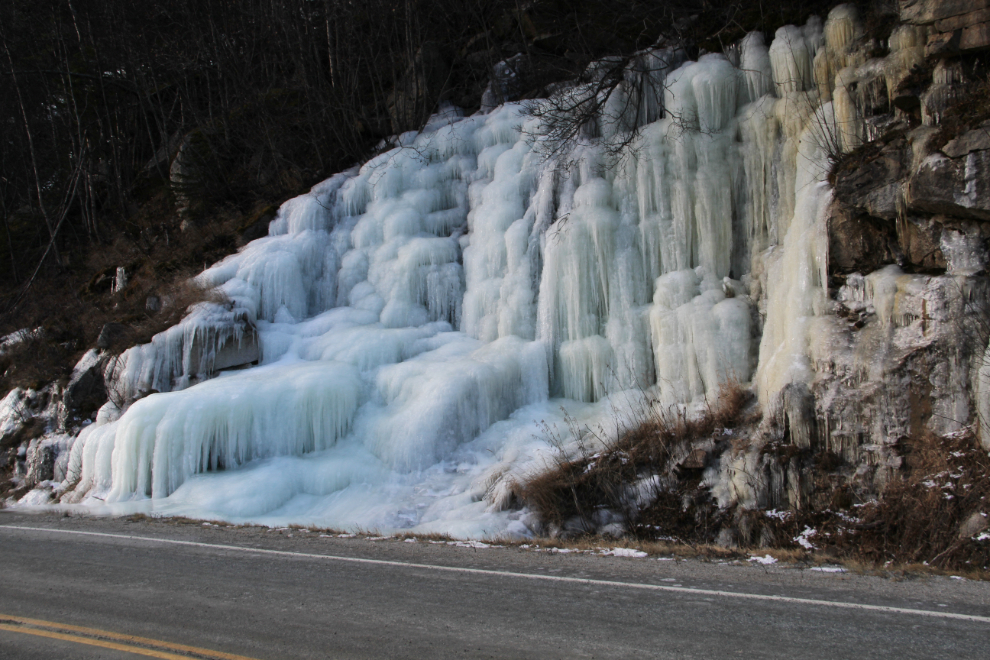
Some of the ice-falls grow across the highway – often called “glaciering”. The Department of Highways will certainly be keeping an eye on this one.
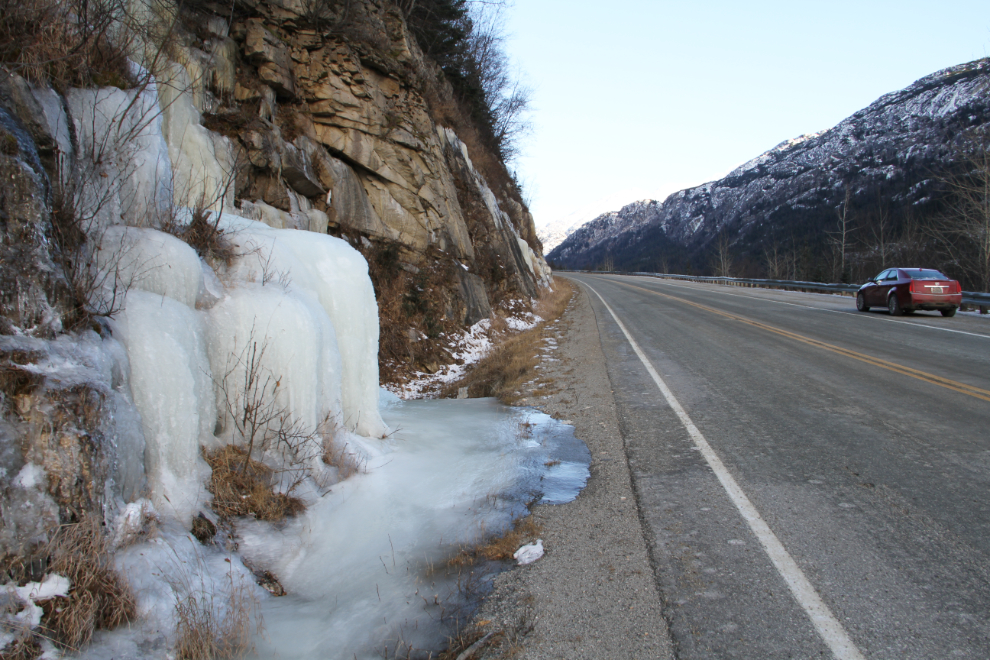
This wonderfully complex creation stopped me for a few minutes.
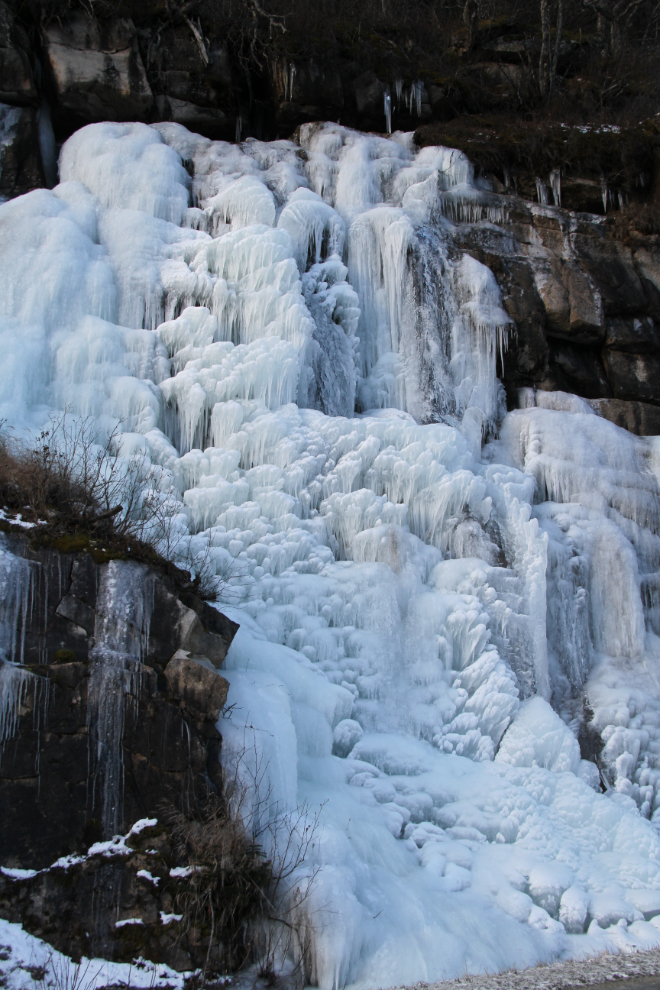
I shot quite a few closeups of it.
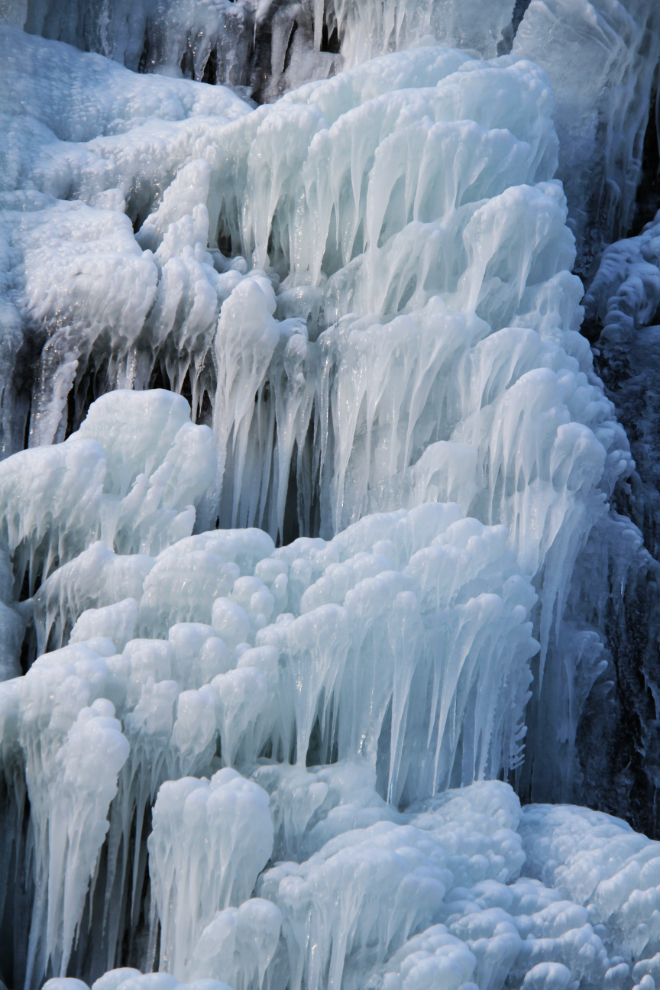
At the White Pass summit (Mile 13 from the ferry terminal), a glance in my rear-view mirror prompted me to pull over for a shot of the icy fog rolling down the slopes.
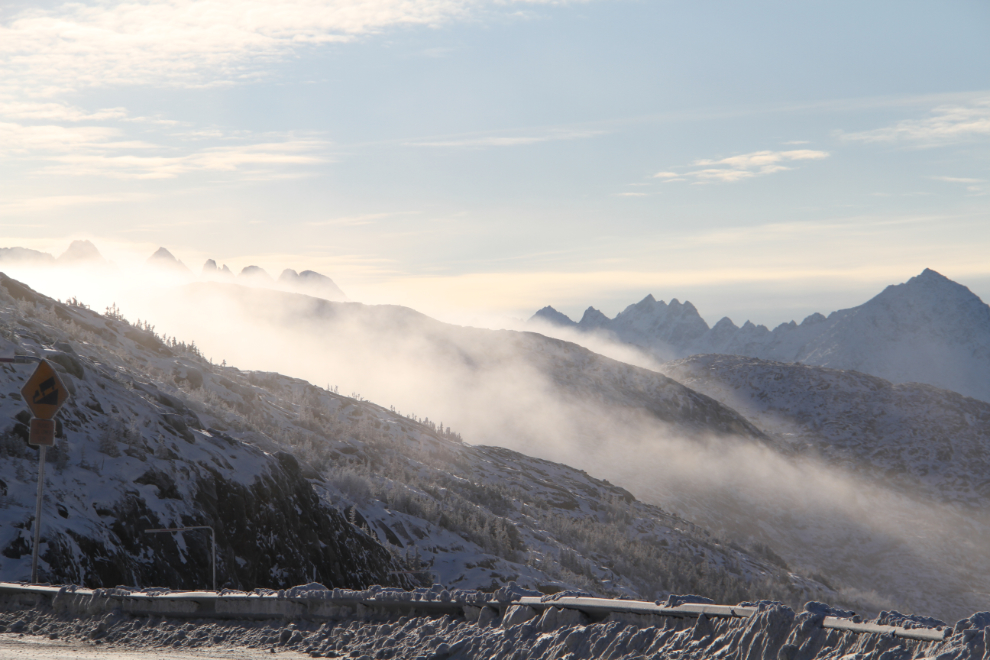
That pullout also looked like a great location to do a test shoot of the range of what are now my 2 primary lenses. A Canon EF-S 18-200mm has been a fixture on my EOS 7D for about 4 years now. The first shot was taken at 200mm.
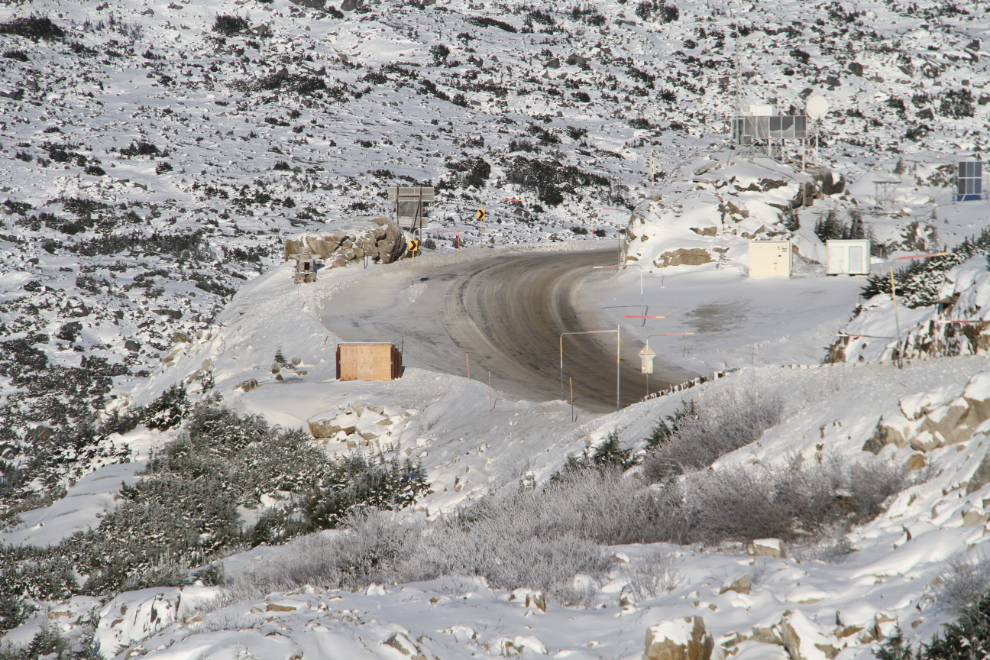
The same lens shooting the same view at 20mm. I bought this lens because I destroyed 2 Canon Rebel bodies by getting dirt in them while changing lenses – now I rarely feel the need to take the lens off.
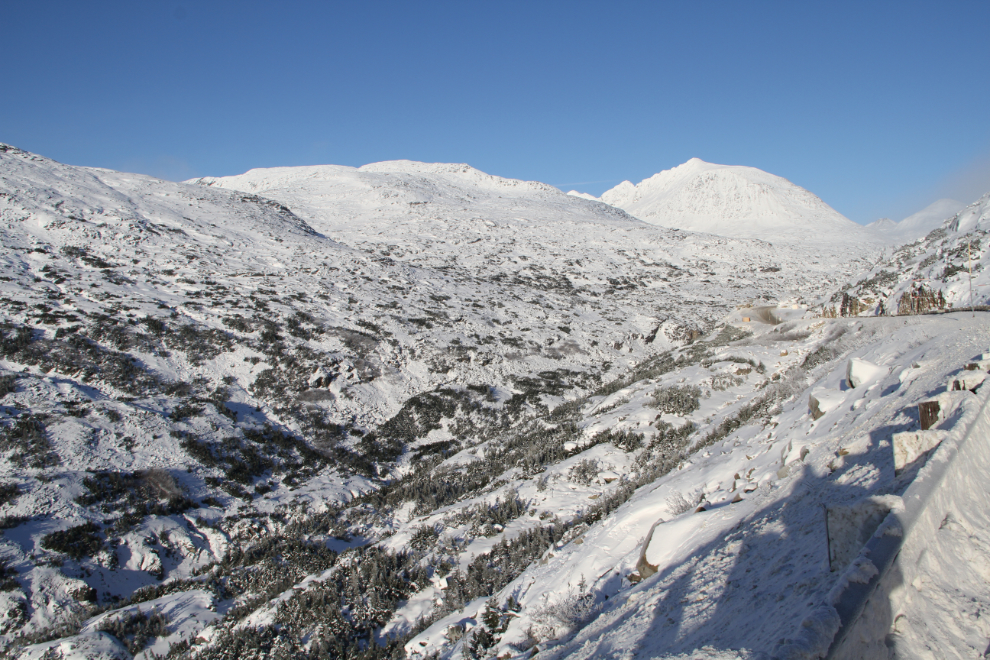
The lens I got a month ago is a Canon EFS 10-18mm STM. While I had intended to use it for aurora shooting, it turned out that the nature of the STM focussing means that it is extremely difficult to focus at night. But it’s a superb lens for some of the tight places I get into – buildings and canyons primarily, but also some forests – so I decided to keep it. The next shot is at 18mm.
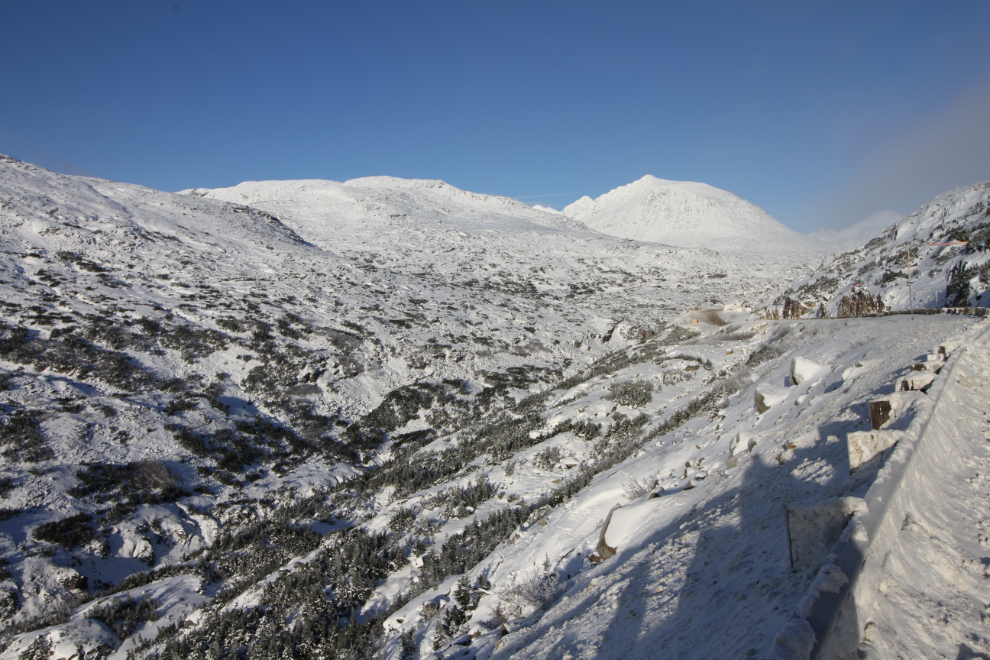
And finally the 10-18mm at 10mm. This takes in a whole lot of country!
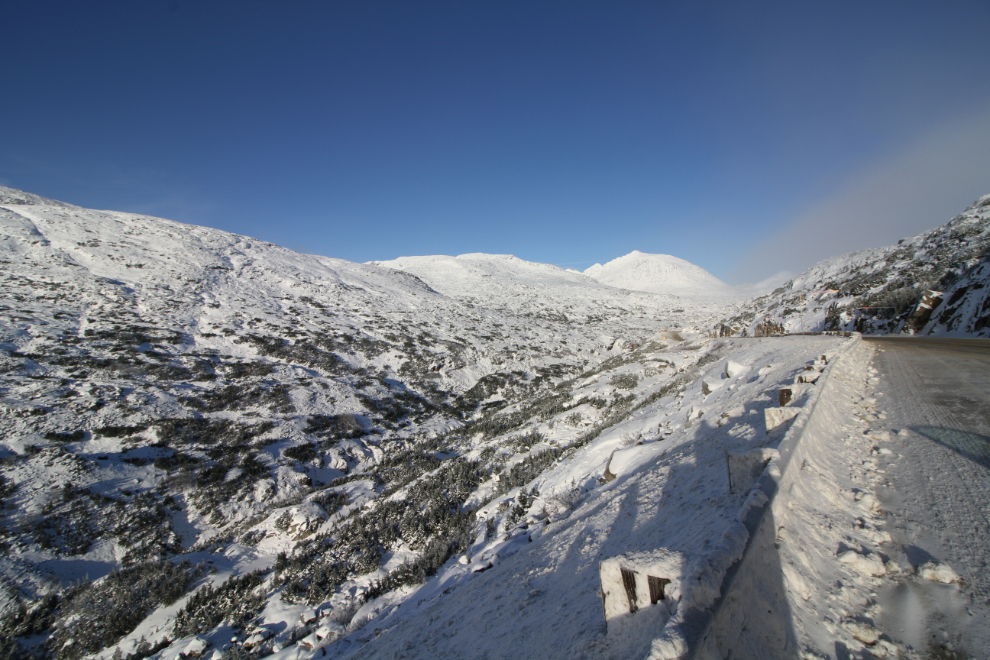
So this will be my usual outfit for travel now. I also often carry a 75-300mm lens but it rarely comes out of the bag anymore.

To keep all the camera-gear comments together in this post, the lens I went down to pick up today is a Rokinon 10mm f2.8. Very wide and very fast, this is specifically for aurora shooting.
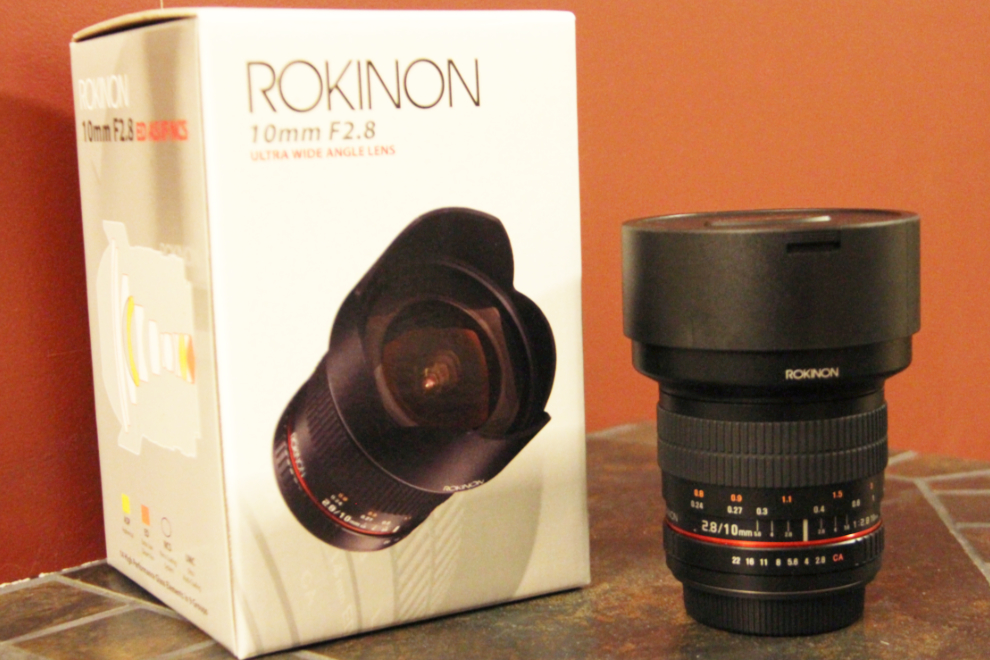
Back on the road. Along Summit Lake at about Km 27, the view ahead and the hoar frost on alders along the shoulder stopped me for a few minutes.
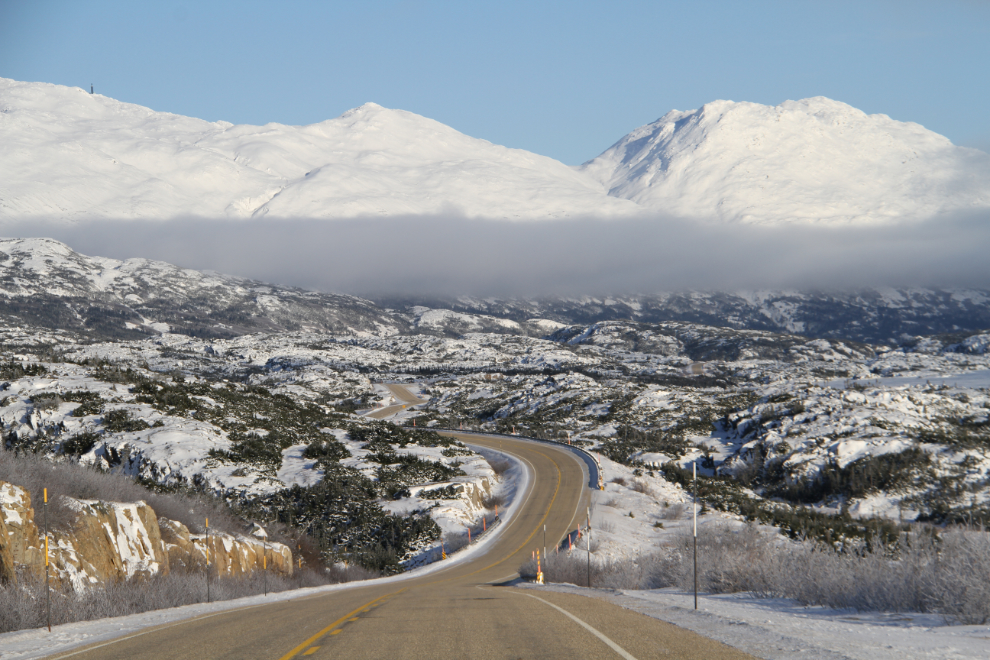
It was very foggy in the Carcross area, so I made a detour over to the viewing deck to see the fog being created by the open water on Lake Bennett.
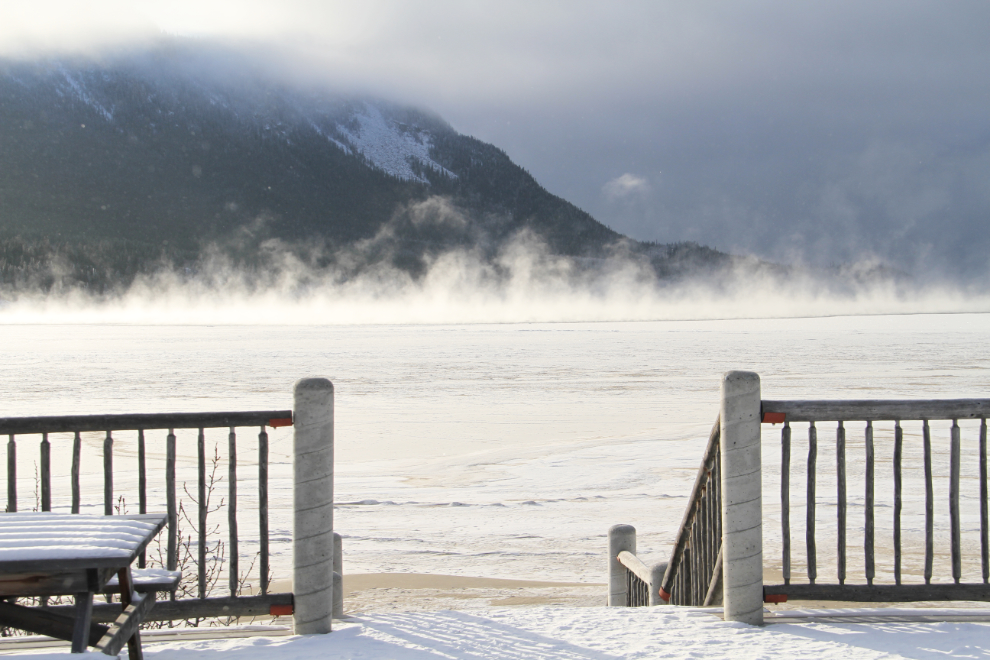
The next morning, it was -24 again, and seeing Cathy cleaning off her Jeep to go to work made me get to work to clear the garage out so both vehicles can fit.
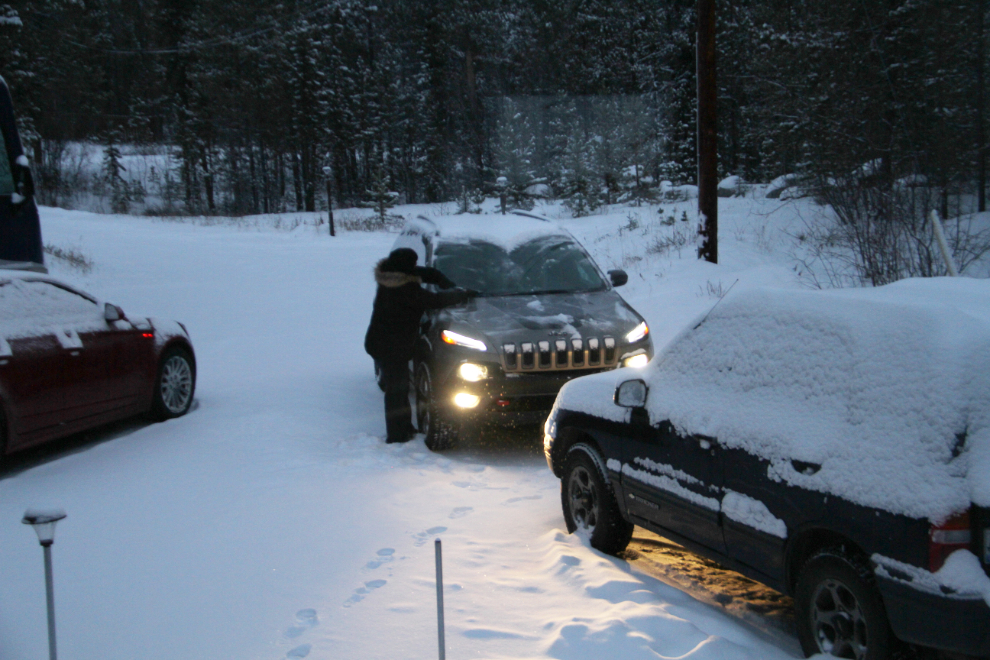
There, much better! And just in time – we have an even -30°C (-22°F) this morning. Now it doesn’t matter how cold it gets.

While it’s bloody cold outside, we’re already in Summer-thinking mode. This map shows the route of the 4-week part of our season-opener RV trip that Cathy will be with me for. It’s basically the month of May, exploring the South Okanagan and Kootenay regions of BC. That part of the trip culminates in Calgary with my twin granddaughters’ graduation ceremonies.
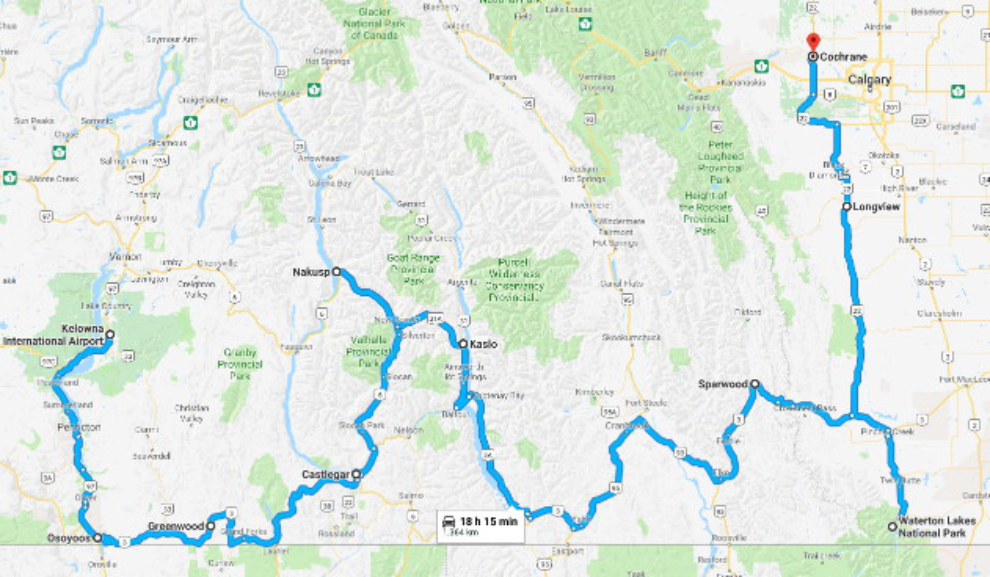
I may be off on a major winter adventure in the near future. I’m feeling a strong draw to drive to Calgary to see my kids. If I do go, I’ll try to remember to shoot some photos to post 🙂
